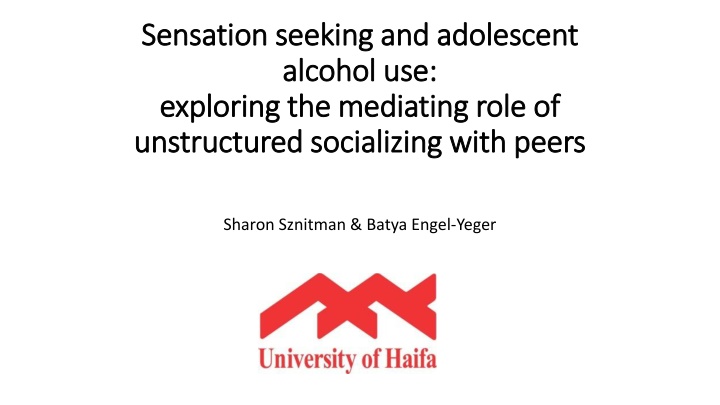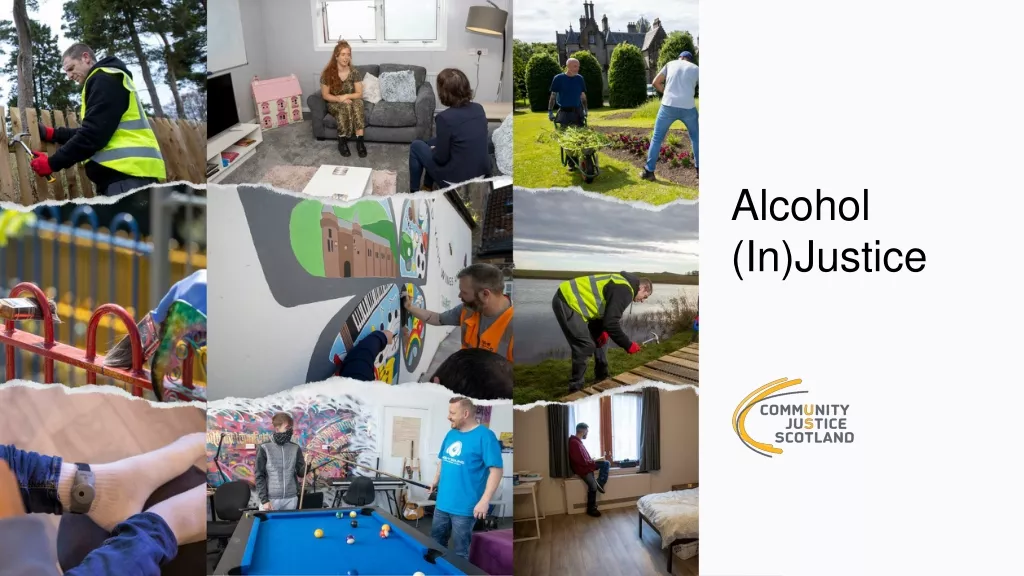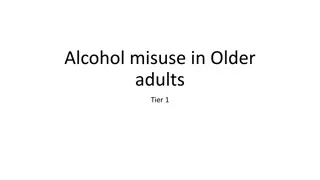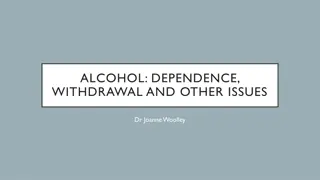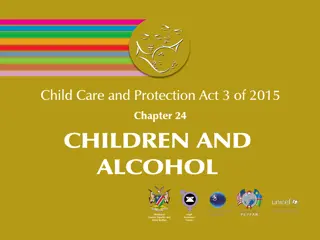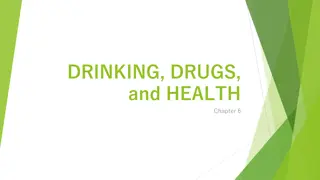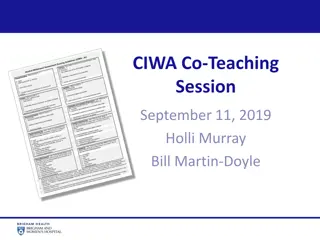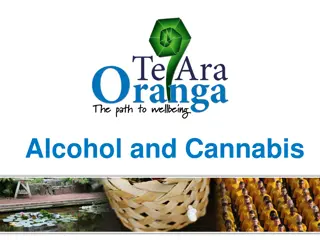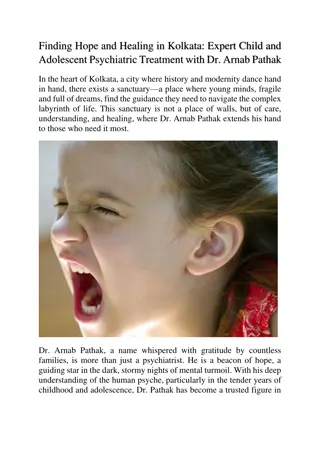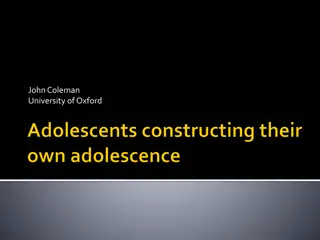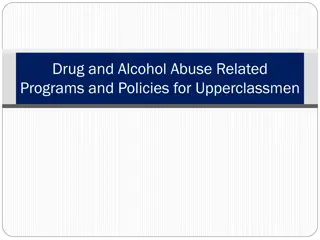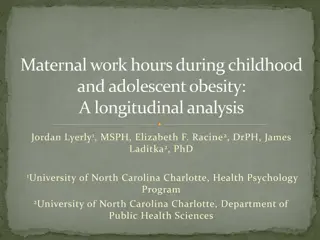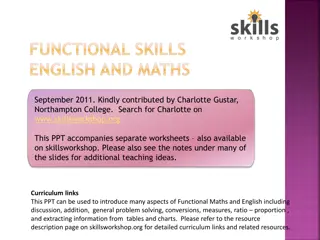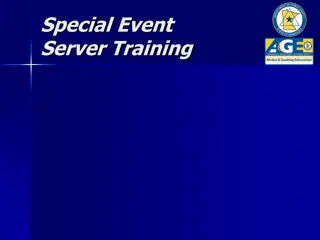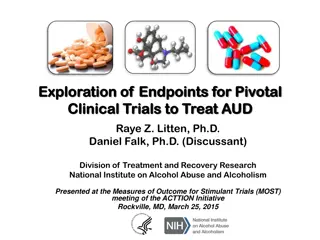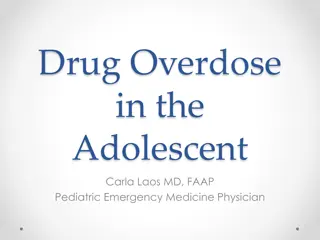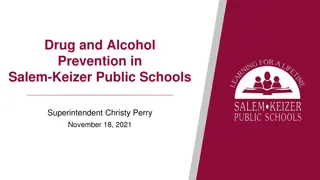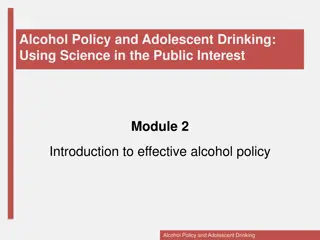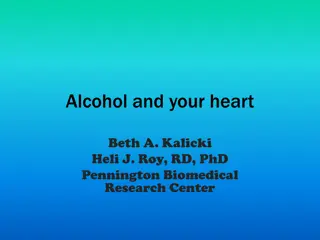Adolescent Alcohol Use and Prevention Strategies
Exploring the relationship between sensation seeking, unstructured socializing, and adolescent alcohol use, this study reveals the underlying risk factors and emphasizes the importance of preventive measures to mitigate the negative consequences associated with heavy and frequent alcohol consumption among adolescents. It highlights the need for comprehensive prevention programs tailored to address modifiable factors influencing alcohol use in youth.
Download Presentation

Please find below an Image/Link to download the presentation.
The content on the website is provided AS IS for your information and personal use only. It may not be sold, licensed, or shared on other websites without obtaining consent from the author.If you encounter any issues during the download, it is possible that the publisher has removed the file from their server.
You are allowed to download the files provided on this website for personal or commercial use, subject to the condition that they are used lawfully. All files are the property of their respective owners.
The content on the website is provided AS IS for your information and personal use only. It may not be sold, licensed, or shared on other websites without obtaining consent from the author.
E N D
Presentation Transcript
Sensation seeking and adolescent Sensation seeking and adolescent alcohol use: alcohol use: exploring exploring the mediating role of the mediating role of unstructured socializing with peers unstructured socializing with peers Sharon Sznitman & Batya Engel-Yeger
Conflict of interest None This work was supported by a research grant from the Israeli Anti- Drug Authority (grant number: 45771)
Heavy and frequent use of alcohol among adolescents why should we care? Poor academic achievement Injuries and violence Sexual risk behavior Later alcoholism Early mortality
Prevention After school and community based prevention programs may be a way forward, but Few after-school programs have been developed Of those that have been developed preventive effects are typically small and short lived Before moving forward with novel prevention programs there is a need for a comprehensive understanding of modifiable factors that influence adolescent alcohol use
Risk factors: personality vulnerability Sensation seeking: A preference for novel and intense activities Particularly sensitive to positive reinforcement and the rewarding outcomes of alcohol use Sensation seeking is thereby theorized as a direct causal risk factor for the use of alcohol Sensation seeking Alcohol use
Risk factors: unstructured social activities Hanging out, going to a party, spending time at friend s house No authoritative figures who monitors behaviors (parent, teacher, coach) Over-represented by deviant and older adolescents Research has shown that participation in unstructured activities is a risk factor for adolescent alcohol use and abuse (Eccles et al., 2003; Trainor et al., 2010; Wilson et al., 2010)
Risk factors: unstructured social activities & sensation seeking In alcohol research one often overlooked area is that sensation seekers may not only be prone to alcohol use They may also be particularly likely to be involved in unstructured activities because of their impulsiveness and need for excitement makes spontaneous, self-initiated and unsupervised activities especially appealing
Hypothesis: Rather than functioning as a direct causal effect, sensation seeking increases risk of alcohol use through its effect on participation in unstructured social activities Unstructured socializing Sensation seeking Alcohol use
Research question Does participation in unstructured activities mediate the association between sensation seeking and adolescent alcohol use?
Methods Cross sectional survey distributed during school hours in 1 Israeli state-secular Jewish high school (10th to 12th grade) in the center region of Israel All classrooms were sampled N= 360 51.5% boys Age 15 -18 (mean=16.02 .85)
Measures: Sensation seeking: how much do you agree with the following statements about yourself: I would like to skydive , I am interested in experience for its own sake even if it is illegal , I like doing things that frighten me a little . Scale: 1= strongly disagree - 4=strongly agree (reliability .70) Unstructured socializing with peers: how often do you participate in any of the following unstructured activities: partying, hanging out and going to friends home. Scale: 1=once in four months -7=once a day or more (reliability .70) Alcohol use: the frequency of alcohol consumption during the last month (0 = never 7 = 30 times or more) and lifetime frequency of being drunk (0 = never, 5 = 10 time or more). Reliability .60. Covariates: gender and age
Statistical analyses Structural Equation Model (SEM) in AMOS SPSS tested The direct path from sensation seeking to alcohol use The indirect path from sensation seeking to alcohol use through unstructured socializing with peers Mediated effects were estimated using the product of coefficients method (MacKinnon, 2008) and was tested by bootstrapping the sampling distribution of the indirect effect and obtaining its confidence interval Model fit measures: Comparative Fit Index (CFI) >0.95 Tucker Lewis Index (TLI) >0.90 Root Mean Square Error of Approximation (RMSEA) <0.06
Results Standardized coefficients for the final mediation model Unstructured socializing a path = 0.21** b path = 0.16** Sensation seeking Alcohol use c path = 0.12* The total effect was 0.15 [0.12 + (0.21*0.16) = 0.15] 23% of this total effect was explained by the indirect (mediated) effect *p < .05, ** p < .01, * ** p < .001. Fit indices: 2 (30) =60.31, p=.001; CFI=.95; TLI=.93, RMSEA=.053.
Discussion and conclusion Part of the association between sensation seeking and adolescent alcohol use is mediated by the propensity that sensation seekers have for being involved in unstructured socialization with peers How? Extracurricular activities are adolescents main foci of activity It may drive the development of friendships the more extracurricular activities adolescents share and the more repeated encounters the activities encourage, the more likelihood there is for peer group formation One potential underlying mechanism of the mediated effect is through social networks, e,g. social networks of high sensation seekers are formed through high level of participation in unstructured social activities Involvement in these social networks puts adolescents at particular high risk of alcohol use
Limitations Convenience sample Cross-sectional causal relations need to be verified The current study was designed to be exploratory and provide the first initial knowledge which may inform future longitudinal and experimental studies
Implication for prevention Sensation seeking is biologically determined we cant change it through prevention programs However, one could try to gear sensation seeking adolescents towards structured activity patterns Provide experience with risky activities (e.g. high speed sports like water skiing) under structured conditions and authoritative supervision may satisfy need for sensation-seeking while also protecting them from their own risky behavior (Romer et al., 2010) To encourage engagement with structured activities that also stimulate the dopamine system, such as team sports
